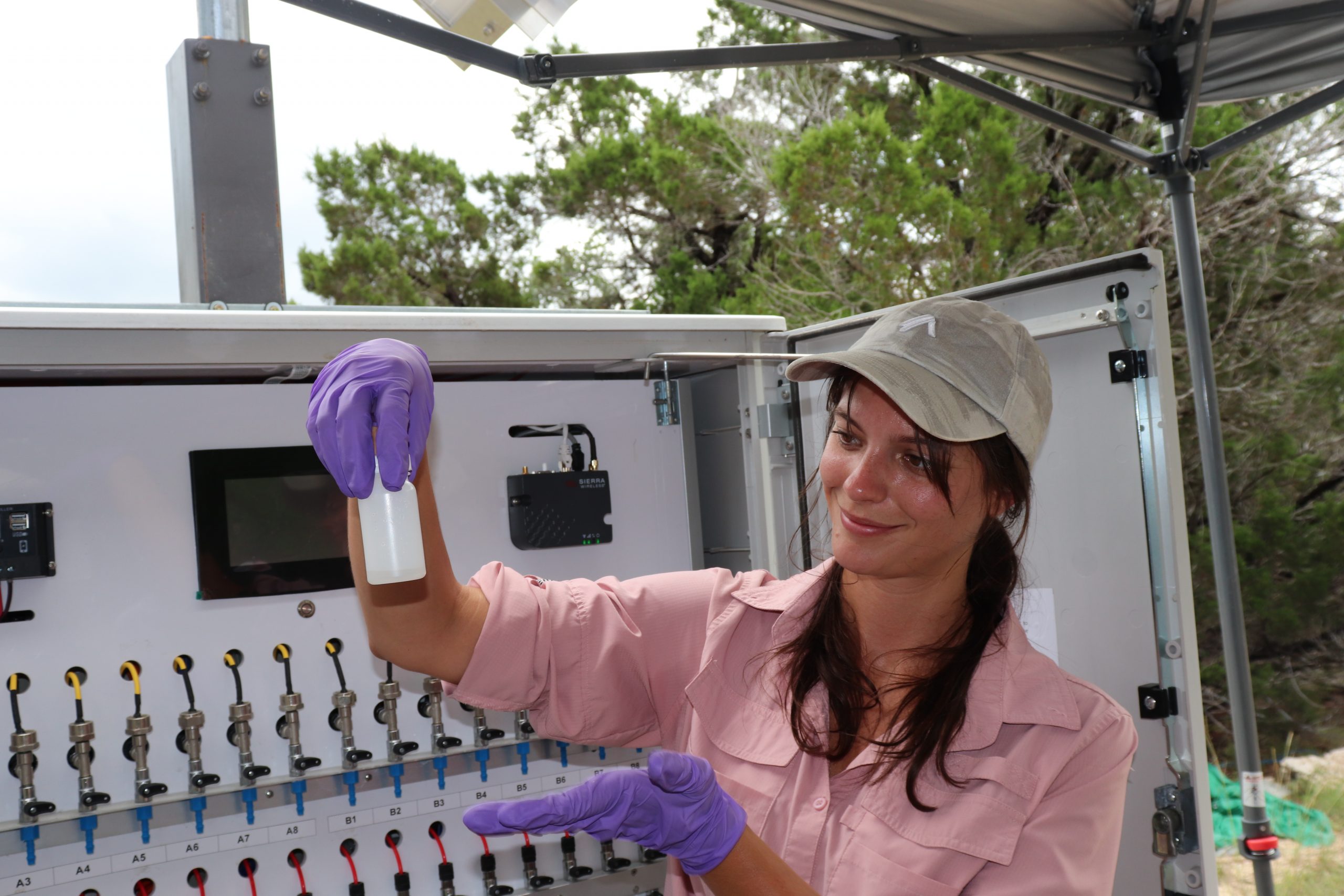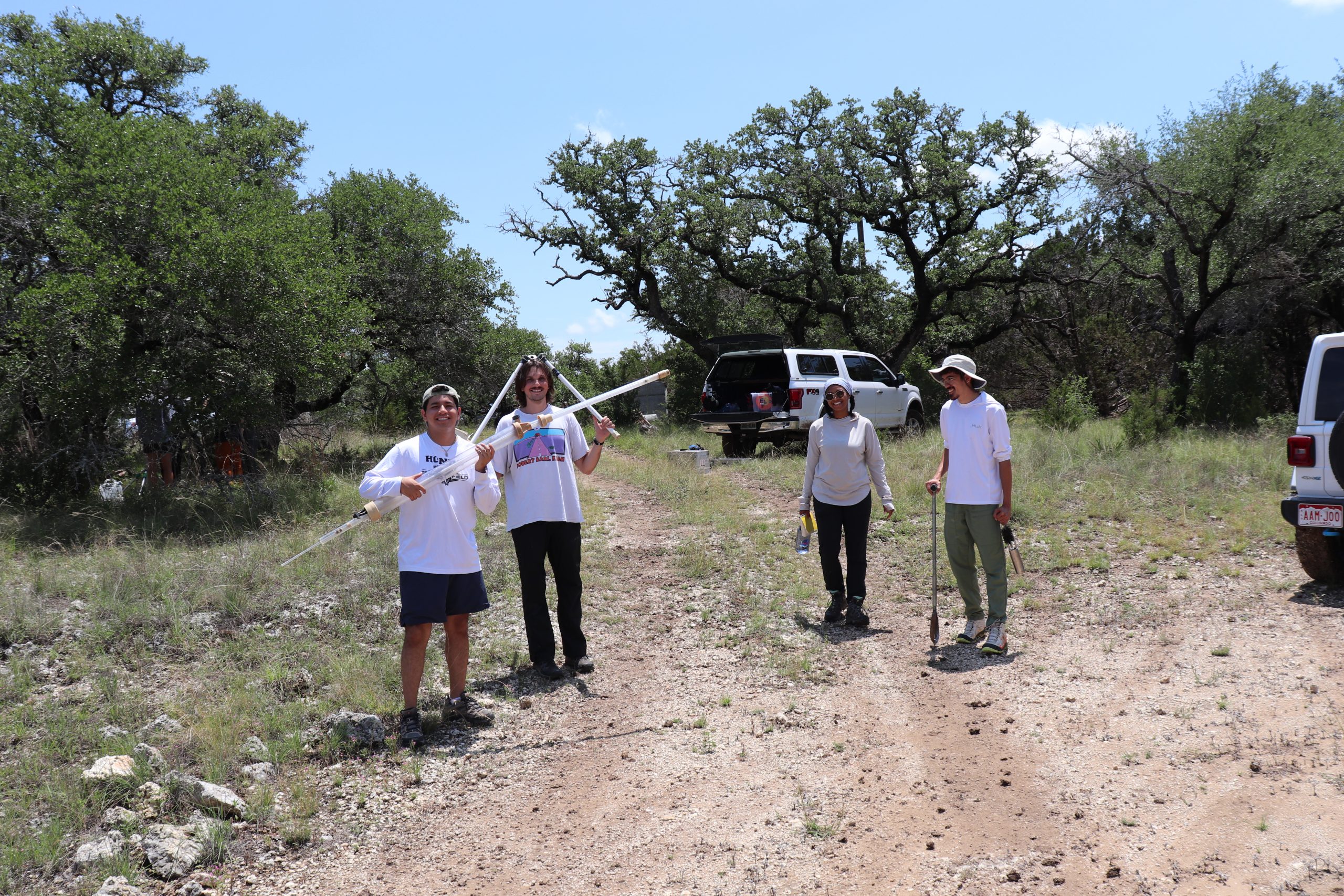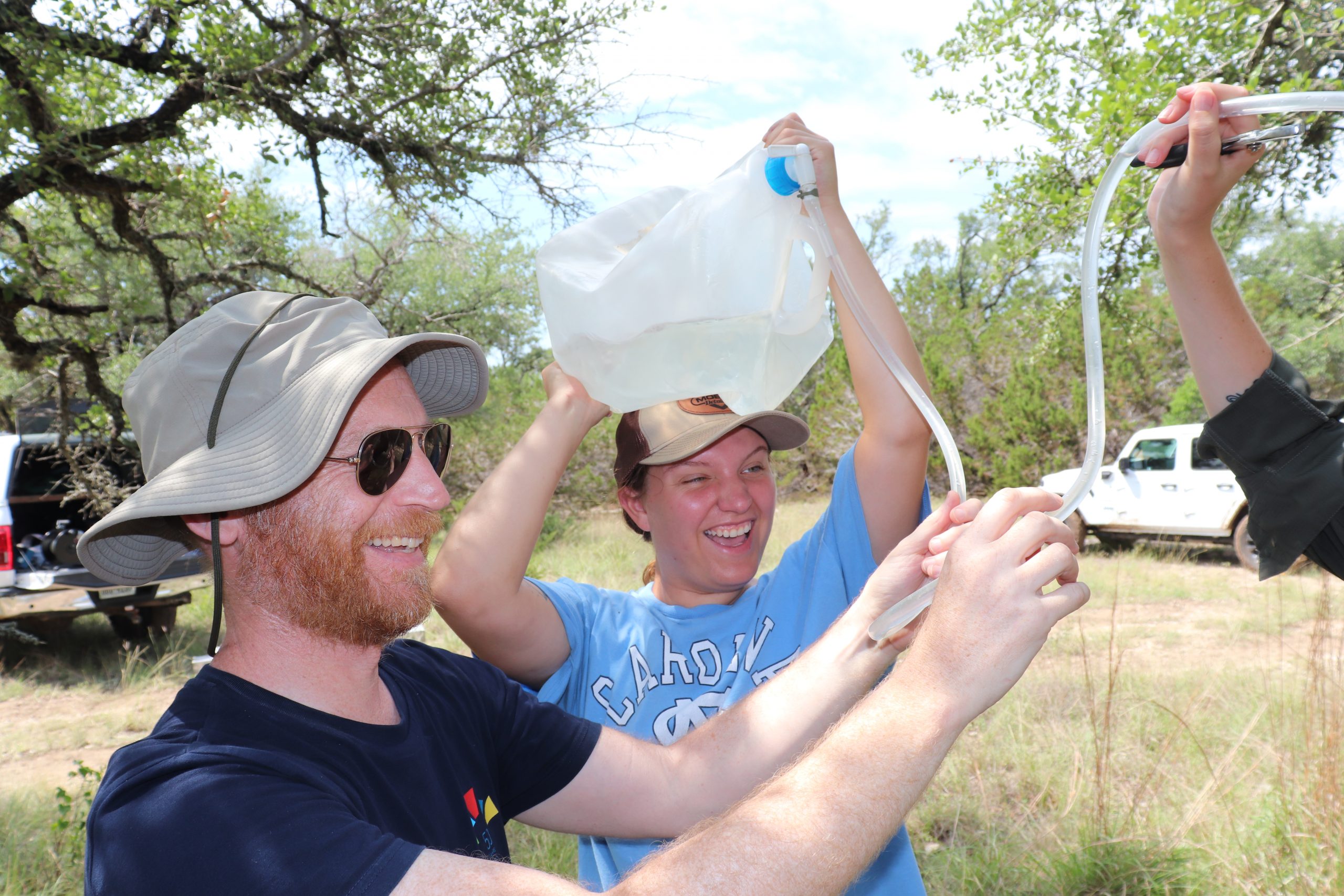Securing Texas Water
A new gift will make UT’s hydrology program even stronger, helping ensure the future of one of the state’s most precious resources
By Anton Caputo
Trudging down a dusty path, skirting ant hills and dripping sweat might not seem like the ideal way to find water. But these Jackson School of Geosciences hydrology students aren’t out for a trip to the lake or river. They’re learning what it takes to find — and measure — water in the Hill Country when creek beds are dry and rain is a distant memory.
Understanding how much water lies under your feet when the land is parched, and how much can be pulled up before wells run dry and the environment suffers irreparable damage has always been the challenge for providing water in Central Texas — and beyond.
That’s why training hydrologists has long been a mission at the Jackson School. It’s a mission that was recently boosted with a $1 million gift from an anonymous donor who wants to see the hydrology program continue to thrive and evolve. That evolution could pay big dividends for Central Texas, said research associate professor Marcus Gary, who helps lead the students on educational and research trips like this one.



“There’s really some unique opportunities that the Jackson School has with regards to groundwater resources,” he said. “There’s such a big need in Central Texas and throughout Texas. We should tackle the things in our backyard. I think this is an opportunity to really champion that.”
The gift will help fund research trips, equipment and internships for students to work with the groundwater districts and agencies throughout Texas that are responsible for managing the state’s water. And soon, thanks to the donation, the Jackson School will roll out a one-stop public web portal where anyone can access the data and studies that Jackson School students are conducting on Texas water.
Gary believes there is a ready audience for the information, including the agencies and groundwater districts that often work hand-in-hand with UT on the state’s complicated water issues. These connections, he explains, are vital for the state and the school.
Gary himself is a perfect example. He earned his doctorate from UT (before the Jackson School was formed) and spent a long career as a hydrologist in Texas, working, among other places, at the U.S. Geological Survey and the Edwards Aquifer Authority, where he served as principal geoscientist for aquifer science. And since 2011, he has worked part time at the Jackson School as an adjunct professor before coming on fulltime in March 2025.
Gary can quickly rattle off former students who are working around the state at water management agencies like the Barton Springs-Edwards Aquifer Conservation District and the Texas Water Development Board. They all learned their trade from Jackson School hydrologists, just like the students working today at the school’s White Family Outdoor Learning Center — a 266-acre ranch outside of Dripping Springs.
They are students like Brooklyn Douglass, who is closely monitoring a plastic apparatus as it slowly pumps water into the ground. Douglass graduated from Austin’s Lake Travis High School with aspirations of being a meteorologist. That changed when she was introduced to hydrology at the Jackson School.
“I like working in the field,” she said. “I like science, and I want to help people and the environment. Hydrology is just really cool.”
Cool and important. Texas’ population is expected to increase from today’s 31 million to more than 51 million by 2070. Yet its existing water supplies are expected to decrease by about 18 percent as aquifers are depleted, according to the Texas Water Development Board. This means that it’s vital to account for and figure out how to best manage every drop.
Here in the field, Jackson School hydrology students are learning to take cutting-edge equipment and scientific research to address the age-old problem.
Douglass and the other students on her team are engaged in “guelphing,” a technique that involves pumping water into the shallow ground to assess how well it moves through the soil. They’re among about two dozen students divided into small teams conducting hydrology exercises and collecting data.
Others are taking turns using a neutron probe to measure moisture belowground. Another group is checking a unique vadose zone monitoring system to understand how much water is contained in the rocky zone between the surface and the water table that is vital for trees’ survival during prolonged drought. They’re also conducting electromagnetic surveys to map near-surface moisture.
The goal today, as explained by hydrology Associate Professor Daniella Rempe, is to learn how to collect and use data to understand how the changing Texas landscape — both trees and people — control groundwater recharge.
The White Family Outdoor Learning Center’s Hill Country setting provides a unique opportunity to observe how mature oak and juniper ecosystems interact with subsurface water during and after drought to impact recharge into the aquifer below.
“There’s no substitute for getting your hands dirty, she said “What our students learn in real time here in central Texas applies across Texas and beyond.”
Finley Davis, a senior from McKinney Texas, said the experience is eye opening. After this hydrology field camp, he’s leaving for an internship in Pennsylvania where he will be helping update federal flood maps. But he can’t help but think he might have found a future calling on this hot, dusty trip to the Hill Country.
“I haven’t had much experience, but I really do like the groundwater stuff,” he said. “This isn’t just doing fieldwork for the sake of doing fieldwork. This is about having a plan in mind and making an impact.”
To support the hydrology program, contact Elizabeth Gibson at egibson@jsg.utexas.edu
The University of Texas at Austin
Web Privacy | Web Accessibility Policy | Adobe Reader

